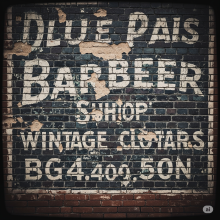The Curious Case of the Furniture That Wasn’t: The Strange World of "Faux Antiques"
At InstAppraisal, we see thousands of genuine antique and collectible items. But every once in a while, something truly curious comes through—something that looks like an antique, feels like an antique, even smells like an antique… but isn’t one. Welcome to the strange and sometimes hilarious world of faux antiques.
Whether made to deceive or simply as theatrical props or decorative accents, faux antiques have become collectible in their own right. In this article, we explore this shadow realm of artistry, forgery, and accidental genius.
It’s Not Always a Scam
When people hear "fake antique," they often think of a con artist. But not all faux antiques were created with bad intentions. In fact, entire factories during the 19th and early 20th centuries were built around producing reproduction Renaissance furniture or “distressed” farmhouse wares for the booming Victorian and Edwardian upper classes. Ironically, these reproductions have aged to the point where they’re now antique reproductions—which in themselves are collectible!
Clues That It’s Not the Real Deal
- Tool Marks: Uniform machine marks or rotary saw patterns often mean modern manufacture.
- Joinery: Dovetail joints on drawers that are too perfectly matched or too regular are usually machine-made.
- Wood Species: MDF and plywood weren’t used in true antique construction.
- Patina Problems: A consistent or artificial-looking finish that doesn’t show natural aging is a red flag.
Why Some Faux Antiques Are Valuable
Believe it or not, certain fake antiques have become collectible in their own right. Mid-20th century Hollywood prop furniture, for instance, has exploded in value—especially pieces made for film epics of the 1950s and 60s. Similarly, Chinoiserie or "faux Chinese" cabinets made in England for aristocrats are now valued for their own aesthetic merit and craftsmanship, even if not authentically Eastern in origin.
How to Appraise a Faux Antique
This is where we come in. At InstAppraisal.com, we offer free, expert appraisals of both authentic and reproduction antiques. Our community and experts can help you determine if that beautiful "Louis XV" armchair is 18th century, 19th century, or just an excellent 1980s homage made for a Las Vegas hotel.
Final Thoughts
The line between authentic antique and clever reproduction can be thin—and sometimes subjective. But faux antiques are a part of history, too. They reflect what previous generations thought history looked like, and they deserve a place in the story of decorative arts. Just maybe don’t pay 5-figure prices unless the provenance is rock-solid.
Have a piece you're unsure about? Submit it to InstAppraisal and join our community of collectors, experts, and curious treasure hunters.

